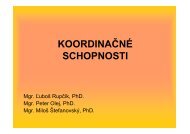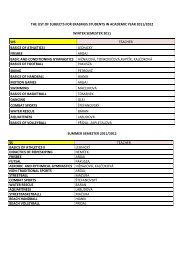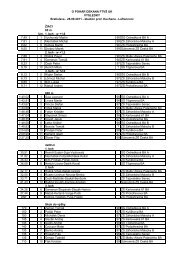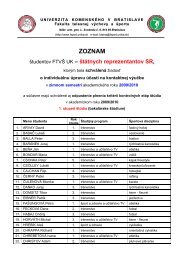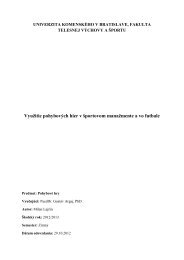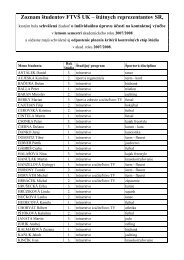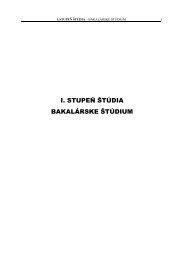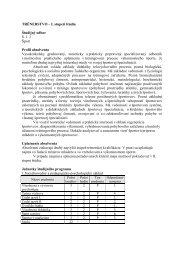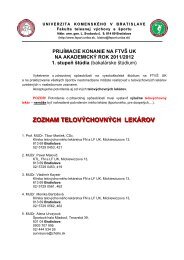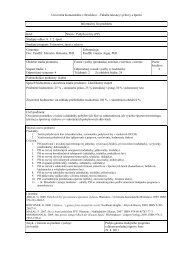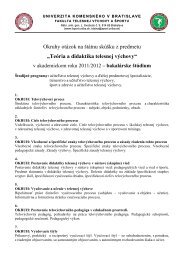acta facultatis educationis physicae universitatis comenianae
acta facultatis educationis physicae universitatis comenianae
acta facultatis educationis physicae universitatis comenianae
Create successful ePaper yourself
Turn your PDF publications into a flip-book with our unique Google optimized e-Paper software.
Differences in game performance parameters of winning and losing ice-hockey teams<br />
35<br />
Effectiveness of solutions to situations 1v1<br />
During the investigated periods, total 626 situations 1v1 occurred. Significant differences<br />
between the winning and losing teams were found in the overall effectiveness of solutions<br />
to situations 1v1 (p < 0.01) and in offence (p < 0.01). The winning teams effectively resolved<br />
17 situations 1v1 per period in average that is of 8 more that in the losing teams. This difference<br />
in offence represents four effectively resolved situations per period for the benefit of<br />
winners (Table 5). As regards effective solutions to situations 1v1 in defence, no significant<br />
differences were found. The losing teams were surprisingly slightly more successful than<br />
the winning ones.<br />
Table 5<br />
Effectiveness of solutions to situations 1v1 in winning and losing teams<br />
Effectiveness of solutions to situations 1v1<br />
total offence defence<br />
winner loser winner loser winner loser<br />
[number] [number] [number]<br />
∑ 357 269 237 152 120 117<br />
Median 14.5 10 9 6 5 5<br />
Mode 17 9 9 5 4 5<br />
Minimum 9.0 4.0 4.0 1.0 2.0 1.0<br />
Maximum 25 23 18 17 9 10<br />
V R 16 19 14 16 7 9<br />
U-test p < 0.01 p < 0.01 n. s.<br />
From the aspect of localisation of solutions to situations 1v1 into individual zones, significant<br />
differences were found only in offence in the attacking zone (p < 0.01) for the benefit<br />
of winning teams. As regards the mean value per period, they resolved successfully of 2.5<br />
situations 1v1 more. The winning teams resolved successfully six situations 1v1 in average,<br />
while the losing teams only two. No significant differences were recorded in other zones,<br />
both in offence and defence (Table 6).<br />
Puck carrying factors<br />
Significant differences between the winning and losing teams were recorded in the overall<br />
puck control (p < 0.01), puck carrying in neutral (p < 0.05) and attacking zones (p < 0.01).<br />
The winning teams controlled the puck of 53 minutes and 26 seconds longer than the losing<br />
ones in total, of 5 minutes and 29 seconds longer in the neutral zone and of 42 minutes and<br />
20 seconds longer in the attacking zone. No significant differences in puck carrying in the<br />
defensive zone were recorded between the winning and losing teams (p > 0.05) (Table 7).<br />
Acta Facultatis Educationis Physicae Universitatis Comenianae LII/I



